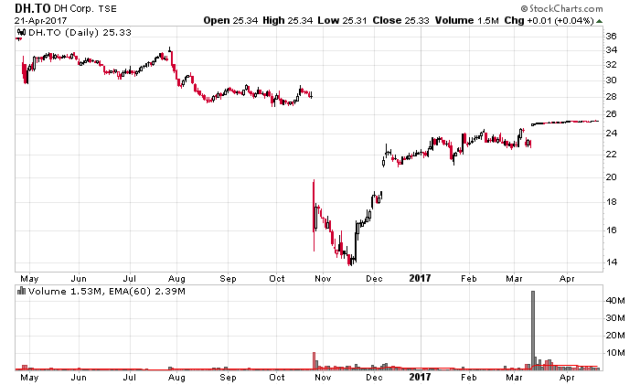I will warn this is a very dry post.
The merger arbitrage spread with KCG has narrowed considerably.
When the $20 cash merger was announced the shares were trading at $19.75. There is little chance of the deal falling through or there being a superior offer.
Today KCG is trading at $19.88. The estimated close of the merger was reported to be “3rd quarter 2017”. The assumption is the mid-range, or August 15, 2017.
So there are 3.5 months until the deal closes.
12 cents appreciation is 0.6% over 3.5 months, which over the course of 3.5 months implies a 2.1% annualized rate, not compounding. This also excludes trading costs.
Because I had a small cash deficit in my USD account and a surplus in CAD, I’ve sold some shares at $19.88 to make up the shortfall. I placed it at the ask to minimize trading costs, which turned out to be 29 cents per 100 shares.
What’s interesting is my trade got hammered away, 100 shares at a time, approximately 2-4 seconds apart per trade. Interesting algorithms at play here.
I also believe Virtu (Nasdaq: VIRT) will have a more difficult time with the integration of KCG than they originally anticipate. The company cultures are significantly different and while the merger makes sense on paper, in practice it is going to be quite different. KCG was also dealing with a non-trivial data migration program on their own, from New Jersey to New York City and these sorts of technical details require highly skilled individuals to pull off without causing trading blow-ups. It might take them a year to get things stabilized after the merger is finished. KCG had huge growing pains of its own after it was reverse-takeovered by GetCo.
